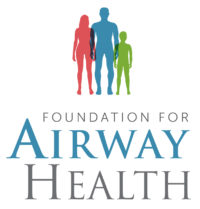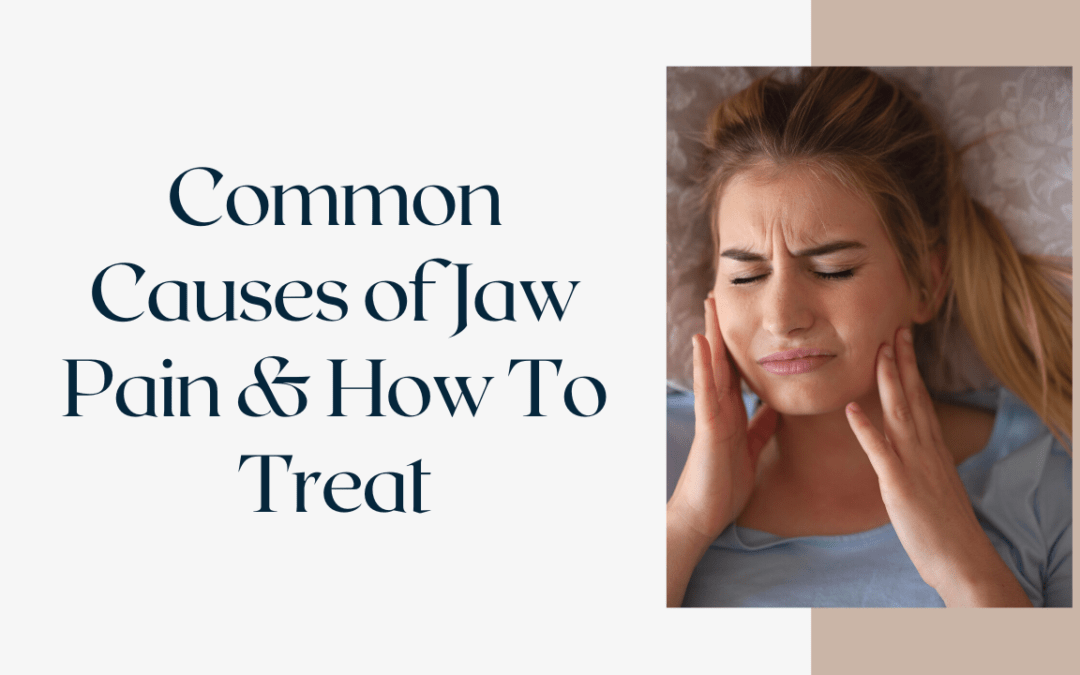Jaw pain is a hot topic right now and a large portion of people whom I do exams on are experiencing or have experienced TMD or jaw pain / craniofacial pain / orofacial pain in the past. I won’t use all of those terms throughout this article but pain is pain, it’s just where the particular person is experiencing it. One person may experience pain at the jaw joint, while another person may feel ear pain, and yet another person may feel pain in the side of the head.
The important thing to know is that it’s not about looking for where the pain is, but rather about what is the source of the pain
Before we dive in, here are some craniofacial pain facts that I learned in a course I took several years ago.
- 1 in 6 suffer from TMD and orofacial pain
- 2nd most common reason (after a toothache) that someone goes to the dentist
- Can be associated with headache and neck pain
- Age of people most affected by TMD is 20-40
- Most common in females
What is TMJ / TMD?
The correct term is TMD, which is defined as “Temporomandibular disorders (TMD) are disorders of the jaw muscles, temporomandibular joints, and the nerves associated with chronic facial pain. Any problem that prevents the complex system of muscles, bones, and joints from working together in harmony may result in temporomandibular disorder.
The National Institute of Dental and Craniofacial Research classifies TMD by the following:
- Myofascial pain. This is the most common form of TMD. It results in discomfort or pain in the fascia (connective tissue covering the muscles) and muscles that control jaw, neck and shoulder function.
- Internal derangement of the joint. This means a dislocated jaw or displaced disk, (cushion of cartilage between the head of the jaw bone and the skull), or injury to the condyle (the rounded end of the jaw bone that articulates with the temporal skull bone).
- Degenerative joint disease. This includes osteoarthritis or rheumatoid arthritis in the jaw joint.
You can have one or more of these conditions at the same time.” (from the John Hopkins medicine website.)
TMJ is just referring to the temporomandibular joint, which every human has two of. Many people use them interchangeably, but in this article I will exclusively use TMD to talk about disorder of the joint and TMJ when I am specifically talking about just the joint.
Signs and Symptoms of TMD
It is reported that about 10-20% of the general population have TMD and jaw pain/orofacial pain but only about 7% seek treatment.
The most common TMD signs and symptoms are:
- Jaw pain or stiffness (most common in the morning from clenching and grinding at night)
- Headaches
- Ear pain, earaches or tinnitus
- Pain around the eyes, face, shoulders, neck or back
- Trismus (locking of the jaw)
- Limited mouth movements
- Clenching or grinding
- Crepitus or popping of the jaw
- Dizziness
- Sensitive teeth (in the absence of dental or oral health concerns, no decay, etc)
- Changes in occlusion or how the teeth fit together
How long does TMJ last?
I am often asked how long a TMJ flare up will last. TMD concerns will be acute or chronic. Acute TMD / jaw pain symptoms last 10 days – 2 weeks. Normally these issues will be self-limiting and will resolve quite quickly. Chronic TMD/ jaw pain lasts longer than 10-14 days and will almost always be more of a myofascial pain, but can have some episodic flares of acute inflammation.
What causes TMJ?
There isn’t a black and white answer on this so I will answer it from a myofunctional therapist point of view.
Incorrect craniofacial development
There are 22 bones of the skull. When craniofacial development is being affected by things such as mouth breathing, low resting tongue posture, or untreated tongue-ties then the face grows long and narrow instead of strong and forward. This downward growth of the face “warps” some of those pieces of the puzzle, making the puzzle harder to fit together correctly.
Now consider a warped puzzle and the fact that the mandible is the only bone that has joints on both sides of the body and now things are getting tricky. This is what makes the TMJ the most complex joint in the body. Sometimes an easier example to consider is the knee joint. Women tend to have more knee problems because the angle at which the femur attaches to the knee is a different angle than it should be based upon the girth of a woman’s hips.
The jaw is a similar concept.
Untreated tongue-ties
The styloglossus muscle starts at the tip of the tongue and inserts near the TMJ. When someone has an untreated or unidentified tongue-tie, he or she uses other muscles incorrectly to accomplish a movement. A great example is to consider the sound “la la la la”. When made correctly the tip of the tongue should quickly tap the spot right behind the top front teeth without any jaw movement. When people have untreated tongue-ties, the job of the tongue is taken over by the jaw and doing the simple “la la la la” now includes the jaw (like a ventriloquist mouth). This repeated movement of the jaw becomes a repetitive stress injury!
Lack of collaboration from “jaw specialists”
We need to get away from the “silo mentality” and get better at collaborative care. In my experience, I have had many clients who have spent tens of thousands of dollars going to the jaw specialist to get some relief from their TMD symptoms. Imagine my surprise when I find that many of them have significant tongue-ties that are playing a role in the tension and pain. Not to step on any toes, but I really think that this should be jaw pain 101.
When I help doctors and other providers learn how to collaborate, I simply ask them to lift and look. To consider a tongue-tie, complete an assessment or get them referred to me because most doctors don’t know how to accurately identify a tongue-tie unless you can’t stick your tongue out. (Which, by the way, is the most useless piece of information. The most important movement of the tongue is elevation not extension.)
Too many “splints” being used or appliances
Just like there is a pill, potion or cream for everything, there is also a splint or a guard.
The problem with these appliances is that they are a bandaid on a bullet wound. They don’t dig deeper. Why are you having pain? Most commonly, doctors will say “oh, you’re clenching or grinding, let’s sell you an appliance to protect your teeth” and they don’t really go much further than that.
Also, there are many people who shouldn’t be wearing appliances because it is actually exacerbating the problem. (I wrote about that here.)
If you’re wearing a boil-n-bite type of appliance or some DIY thing that you got off late night tv to be your night guard, it is probably just giving you something to clench and grind against, especially if it’s rubber like a football mouth guard.
Jaw pain from clenching or grinding
This is the reason that all those appliances that I referenced above are being sold. The problem is that no one is digging deeper to see why the human is clenching and grinding. This is often associated with an airway concern. When someone has jaw pain from grinding their teeth, just throwing an appliance at it doesn’t help us solve the why part of the equation. This is also why so much sleep apnea is undiagnosed.
Untreated orofacial myofunctional disorders
Mouth breathing
When someone is mouth breathing it will undoubtedly affect the craniofacial development. The face will grow long and narrow instead of strong and forward. It’s a vicious cycle…see “incorrect craniofacial development” from above!
Incorrect tongue posture
Tongue position is crucial because it helps to stabilize the jaw. When the tongue has a low resting posture, the condyle shifts forward and leaves the jaw unstabilized. Myofunctional therapy helps treat jaw pain by focusing on the position of the tongue.
How myofunctional therapy helps TMJ concerns?
Naturally, when a person has pain, he or she wants a solution. Myofunctional therapy can be a solution in many cases. I am careful to explain that in the case of TMJ pain and TMD, myofunctional therapy should not be viewed as the one-stop panacea. Success with myofunctional therapy depends upon the source of the pain and the dysfunction present.
Myofunctional therapy helps treat jaw pain by focusing on the position of the tongue as well as teaching how to use the muscles correctly.
Incorrect mouth posture also plays a role in TMJ pain and headaches. As you can imagine, with the mouth constantly open or in the wrong position, the muscles will be stretched and tense all the time. This resting position of the face has muscles enduring constant tension leading to an unstable position of the jaw and causing tension headaches.
Myofunctional therapy helps to correct this orofacial myofunctional disorder by working to re-pattern the resting position of the tongue (to the roof of the mouth) resulting in a closed mouth resting posture. Once a correct closed mouth posture is achieved, the muscles are relieved of constant tension and the headaches are alleviated.
Best ways to alleviate TMJ disorder
As I learned in my functional course from Timothy King (a physiotherapist from Australia) being able to differentiate between 3 types of pain helps me know where to start and how to help alleviate TMJ disorders.
There are three types of orofacial pain: neurological pain (very strong, morphine level prescription pain), articular pain (sharp, localized inflammatory pain associated with joints), or myofascial pain (dull, aching, constant, stiff pain associated with muscles).
Most TMD presentations will be acute and normally resolve themselves within 10-14 days. Pain that goes longer will almost always be myofascial (muscle) pain.
The good news is that EVERYONE who has any sort of TMD (and some who don’t) notice increased discomfort when beginning myofunctional therapy. By exercising the tongue, you are exercising the whole orofacial complex, all the muscles of chewing, as well as the hyoid muscles of the jaw and even the cervical neck musculature.
Most TMD presentations are acute, but some can be chronic or even complex with psycho/social factors as well. Supporting yourself through TMD is more about what NOT to do than what will get rid of the pain.
Some things to keep in mind:
- Movement is a healing agent (once the acute inflammation is under control)
- If the intervention can facilitate movement, then the movement does much of the healing process.
- Movement is the most regenerative thing you can do for most chronic complaints.
- Don’t be afraid of movement
- It is easy to blame one muscle or one incident that caused XYZ, however with the jaw you can’t look at it that way. All of the major masticatory muscles, the muscles that depress the jaw, the tongue, and the cervical neck muscles are all integrated and functionally they will all contribute to the dysfunction.
It is also important to understand that a lot of pain is perpetuated by avoidance and fear. When a movement is painful, a person will avoid that movement. Then compensatory patterns of movement will arise. Those compensations and patterns are often inefficient and lead to other conditions. It is IMPORTANT to be able to alleviate enough pain to enable yourself to engage in movements that you’ve avoided for a long time.
In addition to allowing yourself a bit more time when performing your myofunctional therapy exercises, it will be important to settle any joint inflammation. You should use these ACUTE INFLAMMATION techniques for 2 weeks when starting your myofunctional therapy.
- Soft diet
- Moist heat applied 15-20 minutes, 2-3 x daily for the muscles
- Ice applied to the TMJ, 10-minute intervals, several times per day
- Anti-inflammatory meds
- Rub Voltaren (OTC anti-inflammatory cream) right in front of the ear.
IF you have severe trismus or severe joint inflammation, you don’t want to be forcing the joint through a lot of movement, so I would encourage you to seek out physical therapy / manual myofascial release to work the external masseter and temporalis muscles while you follow the above acute inflammation protocol for 2 weeks.
Once the inflammation has settled down, you’re going to be seeking to restore functional movement and symmetry. Please remember that my suggestions are not to be used in the place of a doctor’s advice. I am a piece of the puzzle and many, many times the 4 muscles of mastication (masseter, temporalis, medial pterygoid, lateral pterygoid) need manual, cross fiber manipulation from a hands-on practitioner who is trained to help you with this!
Proper tongue posture, strength, and function are essential to solving problems related to head pain, speaking, eating, swallowing, breathing, and sleeping.
Other TMD “Do Items”:
- Daily breathing, relaxation, meditation and mindfulness practices will be important. There are lots of apps and guided programs available to help you with this. Visualization is also an impactful healing method.
- Eat a healthy, nutrient dense, whole foods diet. If you are uncomfortable eating these types of food, consider adding them to smoothies or cooking them. By concentrating on eating a variety of quality, nutritious foods and drinking plenty of water, you will support the health foundations of hydration, blood sugar handling, mineral balance, fatty acids, and digestion. The more anti-inflammatory foods that you choose will help.
- Have your vitamin D checked. Many people with TMD (about 75%) have a vitamin D deficiency.
- Since your TMJ is directly connected to the rest of your body, posture and alignment should be of utmost importance. Make sure that you don’t spend large amounts of time hunched over your computer, looking at your phone/laptop for extended periods or slouching.
How to get help for TMD?
I may be biased but based upon my years of experience and the frustration of clients, I say that you should start with an experienced orofacial myofunctional therapist. Here at Impact Myofunctional Therapy, we are the “why” people. We help you understand any orofacial myofunctional disorders, airway or tongue-tie concerns and then we help you design a path of wellness to your best self.
We work with a large network of excellent providers who will help you find root cause resolution instead of just a bandaid.
You can start by booking your exam today. If you want to do some more learning, below are some great resources.


Meet Carmen Woodland
I found this path of passion years ago as a dental hygienist. After a stint in graduate school to earn my M.B.A., I decided that I needed to pivot. My heart was no longer in scraping teeth, but making a much bigger impact on lives touched by myofunctional impairment.
My story is personal and close to home. My sweet granddaughter was passed back and forth amongst doctors and therapists for years trying to figure out her speech, breathing, sleep, chewing and swallowing issues. It wasn’t until I completed more training that I knew her problem was a significant tongue-tie. Bingo.
Fast forward to now. I’m a crusader. A warrior. A voice for those who can’t find theirs, or who don’t have one.
I left clinical hygiene practice to start Integrative Myofunctional Therapy. It has evolved from a way to make a living, into an obsession!
I see clients all over the world and provide innovative, virtual therapy in the remotest of places.
In addition, I also
- Teach other dental hygienists, speech therapists & dentists how to become myofunctional therapists through the Myofunctional Therapy Training Acadedmy.
- Coach dental offices on how to implement myofunctional screening into the daily practice
- Speak in various settings
I’m an airway provider for the Foundation of Airway Health, where I work diligently for the recognition, diagnosis, and treatment of airway-related disorders.
And last but not least, I’m a proud member of several professional associations that afford me the opportunity to learn so that I can help you. My professional memberships include:


